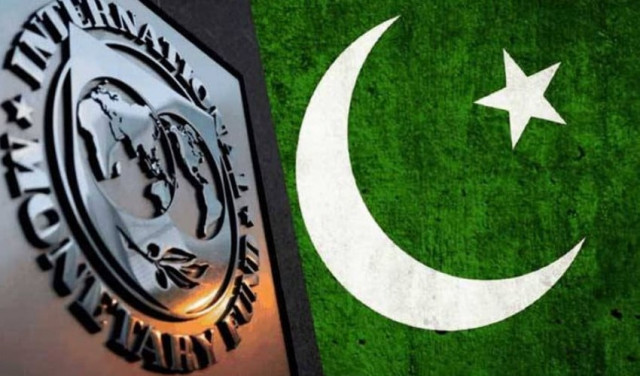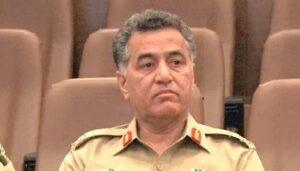Islamabad:
Pakistan has fulfilled only two out of five key fiscal conditions established by the International Monetary Fund (IMF) for the second review of the rescue package of $ 7 billion, since the provinces failed to generate the required cash surpluses and the federal government lost its fiscal objectives.
Despite these deficits, it is unlikely that the government opposes serious obstacles during the next review conversations, which is expected to begin next month, for the launch of the next $ 1 billion sections, due to progress in other critical reference points.
According to a summary of tax operations published by the Ministry of Finance, the provinces failed to save the RS1.2 billion RS1s in the last fiscal year, which ended in June. A strong increase in provincial expenses contributed to miss the target of cash.
Similarly, the Federal Income Board (FBR) lost its two key conditions to collect total income from RS12.3 billion and RS50 billion retailers under the Tajir Dost scheme during the last fiscal year.
But the mother of all fiscal conditions, which generates a primary budget surplus of RS2.4 billion, has been fulfilled together with the total income compiled by the four provinces.
This is the second consecutive year of the primary surplus and the highest in 24 years, exceeding the objective of the IMF. The Ministry of Finance tried to stay in the fiscal patch, but the reverse came from the provincial capitals, which were not under the control of the federal government.
The attorney deficit was also reduced to 5.4% of GDP or RS6.2 billion, which was well below the original 5.9% objective. The Secretary of Finance maintained strict control over spending during the fiscal year.
The IMF has established around 50 conditions under the rescue package of $ 7 billion; Some of them are monitored quarterly and annual and are linked to the approval of loan sections.
The government has achieved relative fiscal stability, but official data showed that the net income of the federal government was still RS1.2 billion less than their needs for only two heads; Interest payments and defense expense. The rest of the expenses are incurred taking more loans.
Against a primary objective of RS2.4 billion, the federal government reported a surplus of RS2.7 billion, or 2.4% of the gross domestic product (GDP), according to the Ministry.
The Ministry of Finance had to make the management of the eleventh hour to ensure that the objective of the main surplus was met after the provinces could not launch surpluses in promised cash and the federal development expense shot beyond the expectations of the Ministry of Finance.
Provincial governments had given the understanding to the IMF and the federal government to generate cash surpluses from RS1.2 billion. However, the four provinces collectively generated a cash surplus of RS921 billion, losing the objective of the IMF for 280 billion.
A breakdown of provincial yield shows that Punjab, with total revenues of RS4 billion, spent RS3.6 billion, generating a surplus of RS348 billion. However, the province registered a statistical discrepancy of RS41 billion, mainly due to expenses below the line to withdraw wheat debt.
Punjab spent RS1.03 billion in development, which was almost equal to federal development in Pakistan. Sindh reserved a cash surplus of RS283 billion after spending RS2.3 billion, which was well below its total income. The province also reported statistical discrepancy of RS48 billion.
Khyber-Pakhtunkhwa (KP) registered a budget surplus of RS176 billion, with RS1.5 billion income and RS1.3 billion expenses in expenses. KP also had a statistical discrepancy of RS155 billion.
Baluchistan generated a surplus of RS113 billion, which means that the province has more income than its needs. Its total expenses amounted to RS767 billion compared to RS881 billion in income. In April of this year, the Federal Government increased the oil collection rate in RS8 per liter in the name of the financing of Baluchistan roads.
Provincial governments enjoy significant fiscal flexibility due to increasing income under the Prize of the National Finance Commission (NFC).
The Planning Minister Ahsan IQBAL has proposed to the Prime Minister to review the current NFC Award by adding new reference points and performance evaluations parameters to ensure that great resources are spent on the welfare of people.
The provinces registered the tax collection of RS979 billion in the last fiscal year, exceeding the objective of the IMF for a margin of 58 billion rupees. The federal government’s fiscal income performance remained encouraging, but lost the key objectives.
The FBR failed to raise any significant income under the Tajir Dost scheme against the objective of RS50 billion during the last fiscal year. The contribution of the Income Tax of the operators through the retention of taxes also remained insignificant compared to the payments of 555 billion rupees of the wage class in the last fiscal year.
In addition, against the given income target of the IMF of more than RS12.32 billion, the FBR group RS11.74 billion.
Thanks to the Central Bank and millions of people who paid the oil tax, income without taxes amounted to more than RS5.6 billion, higher by 30%. The oil tax collection amounted to RS1.22 billion after the prime minister increased rates to RS78 per liter.
On the expenditure side, the federal government spent a total of RS17.1 billion, with current expenses reaching RS15.8 billion. This represented an increase of RS2.3 billion or 15% in total expenses compared to the same period last year, mainly due to the increase in interest payments.
The Federal Government paid RS8.9 billion in interest costs, an increase of RS729 billion compared to the previous year. Defense spending amounted to RS2.2 billion, higher by 18%.
After distributing the provincial participation worth RS6.9 billion, the net income of the federal government remained in RS9.9 billion. This was RS1.2 billion less than combined spending in interest and defense.
The Ministry of Finance said that their current current expenses remained well within the specific ceilings. The main reason for this was the lowest releases of the subsidies, which were in just 49% of the assigned objective. The federal PSDP expenditure increased to RS1.05 billion, which was 43% higher than the previous fiscal year.




